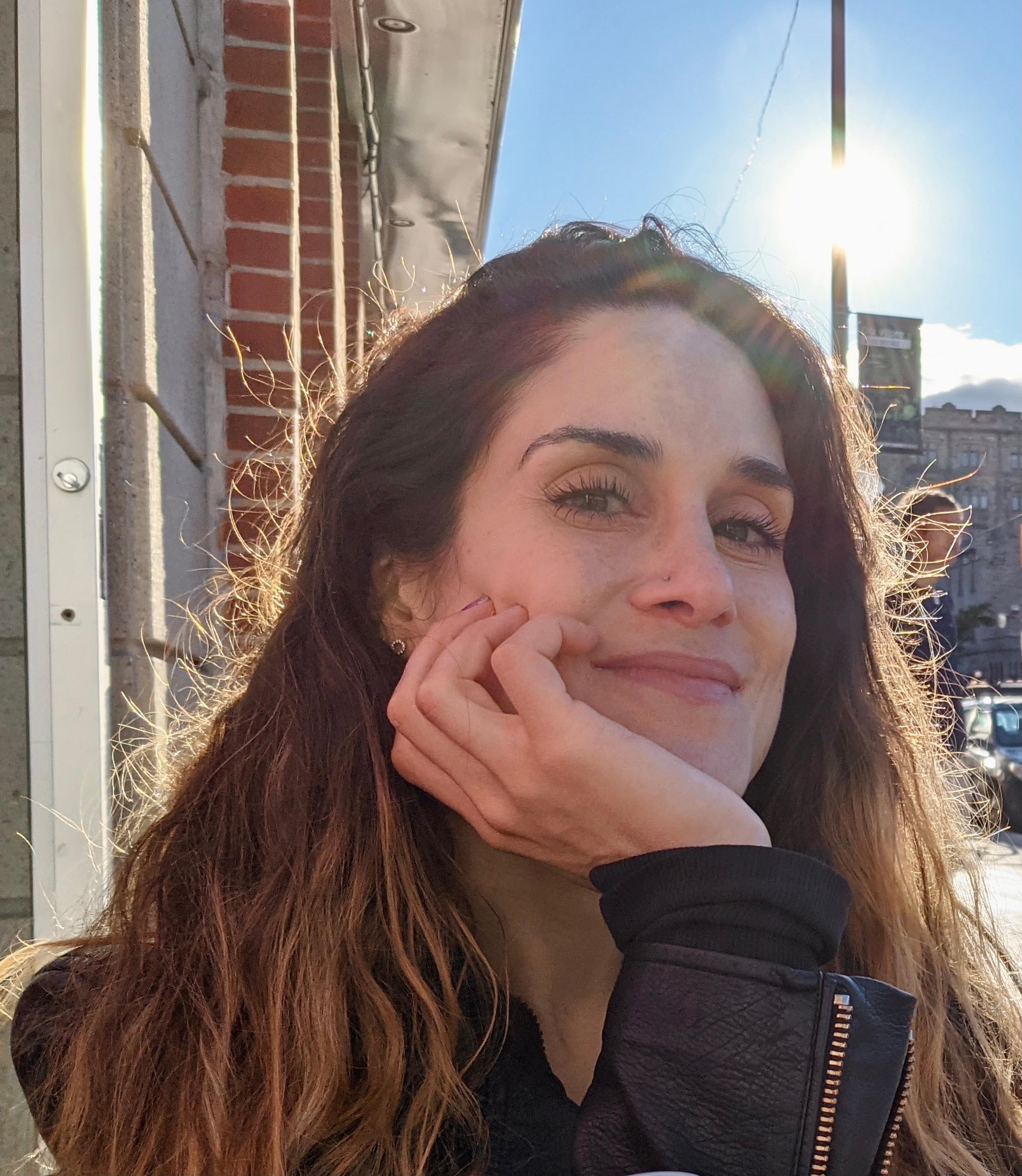


As someone who’s been through many forms of eating disorder treatment, I understand the immense frustration and disillusionment that can result. The first intensive outpatient program (IOP) I attended wasn’t particularly successful. The hospital setting was cold and sterile, the facility’s dietitian was on leave, and there was little guidance on transitioning back to the real world post-treatment. When I started struggling again a few years later, I wasn’t surprised—but was frustrated. Unfortunately my experience wasn’t all that uncommon: many people also encounter these issues with traditional eating disorder treatment like residential treatment centers (RTC), partial hospitalization programs (PHP), and intensive outpatient programs (IOPS.)
“When previous treatment hasn’t worked for a patient, I often hear them express feelings of failure, as well as frustration, exhaustion, despair, grief, isolation…” says Equip Program Development Lead Carly Knauf, Psy.D. Equip’s VP Behavioral Health Care, Angela Celio Doyle, PhD adds, “Thinking you have failed at treatment feels incredibly bad, especially when you have gathered up the courage to dive into the really hard work of recovery from an eating disorder.”
For me, it took a long time and a lot of convincing before I was willing to give treatment another shot, but it became clear that a second attempt was truly the right decision. Here’s why treatment is worth trying again, some of the most common reasons it might not have worked the first time, and what to look for in a new treatment approach.
Why it’s worth trying treatment more than once
Put simply, just because one form of treatment didn’t work, doesn’t mean another will fail a patient as well. “It’s absolutely true that not all treatments work for all people,” Doyle says. “Treating eating disorders is complex—it takes a lot of grit and strategizing with a professional to know what is working, what isn't, and what next steps should be.”
Understanding the variety of treatment options available and knowing the most common obstacles to recovery can help individuals with eating disorders and their loved ones better prepare for the road ahead. “I can say with 100% confidence that it’s worth giving treatment a second, third, or even tenth try,” Doyle says. “I sometimes see the most lasting recovery in people who have learned different things from different providers over time. Ideally, people have relief after their first experience of treatment and I do believe that ‘first try’ recovery can happen. But I would always recommend trying again, and advise people to possibly change up their treatment team if they feel like they’re not being understood or making progress at all.” Sometimes it's hard to try again purely out of affordability. If that's the case, check out this guide to insurance for eating disorder treatment for tips.
Why treatment might not have worked the first time
Regardless of someone’s treatment history there’s hope for every person to reach full, lasting recovery. Here are the most common reasons why treatment may not have worked in the past—and why it’s still worth trying again.
Reason #1: The eating disorder treatment program wasn’t evidence-based
Not only can eating disorder treatment be difficult to access in the first place, but when options are available, they aren’t always backed by science. Research has indicated a lack of available treatments that adequately address the neurobiological complexities of various eating disorders like anorexia. In the wake of academic medical center closures, an array of private treatment programs have appeared to fill the gap, but many unfortunately only offer untested, non-evidence-based interventions.
Eating disorder recovery responds best to evidence-based treatments that work, such as family-based treatment (FBT) and cognitive behavioral therapy for eating disorders (CBT-E). “People don’t fail treatment, treatment fails people. Treatment may fail people for multiple reasons, and that often includes lack of evidence-based programs,” Knauf says.
To truly maximize the odds of reaching lasting recovery, treatment programs must be vetted, evidence-based, and patient-centered. “The best treatment for an eating disorder is based on best practices and involves a synchronized team,” Doyle says. “The care team should meet an individual where they are in their recovery journey and should be willing to adjust if treatment isn't working.”
Reason #2: You didn’t receive enough preparation for adjusting back to real-world triggers
When I completed my first IOP program, I didn’t feel ready to jump back into the “real” world after dedicating three days a week to all-day therapy sessions. Unfortunately, my program didn’t offer much post-treatment resources or support, and I struggled to adjust back to “regular” life. Research has shown that FBT and virtual treatment can help buffer against this susceptibility to relapses once treatment is complete. When patients are able to maintain many of their “normal” activities while getting comprehensive care and support, they’re more likely to thrive on the other side of treatment.
At Equip, treatment is entirely virtual, so you don’t have to uproot your life and can practice implementing new skills into your real life. Equip also invites friends and family into treatment, so you get support in real life too.
Reason #3: Your treatment team wasn’t as resourceful when navigating setbacks
Doyle believes that it’s also important to appreciate and anticipate the gray areas of recovery and understand that recovery can involve setbacks, missteps, and plateaus and still be considered “successful” with time. “I think it's important to not see recovery as black or white,” she says. “People can make significant, life-changing progress and still not feel quite like they’re at the place they want to be with their recovery. An unsuccessful try at treatment could be the result of a number of things— everyone on the team and the person in treatment should work together to critically think about what barriers to recovery might be.”
Doyle adds that sometimes a care team isn’t properly aligned or doesn’t take into account the other disorders or issues that may be affecting treatment. “There may also be other highly serious problems that treatment needs to pause, like active suicidality,” she says. “I believe that all people can recover from an eating disorder and sometimes it takes creativity and can include one step forward and one step back in the process. Recovery is not linear.”
Reason #4: Treatment didn’t include your support network
There’s no denying the profound impact social support can have on the success of eating disorder treatment. According to research, support groups have been found to help reduce stigma and isolation while improving engagement, and be helpful for those supporting a loved one through recovery. And while most of the current research revolves around the importance of family support, emerging studies indicate that social support that includes friends, colleagues, neighbors, and significant others, could be hugely impactful as well.
“We know that a strong support system can make a huge difference in recovery,” Knauf says. “At Equip, we offer a five-person care team for each individual to not only help the patient through recovery, but to also provide support to their loved ones as well.”
Reason #5: Weight gain wasn’t prioritized or sufficient
While weight restoration is rarely easy or pleasant for someone with an eating disorder, it’s a critical part of achieving full recovery for most diagnoses. Weight restoration supports healing and is considered one of the best predictors of psychological improvement and reduced eating disorder symptoms. Without restoring weight to a healthy and sustainable number, full eating disorder recovery just isn’t possible.
“Be careful of treatment that only ‘feels good’ but does not show any changes in health,” Doyle says. “Recovery can be really hard but with a trustworthy, focused, and research-informed team, recovery can be achieved.”
Understanding why treatment may not have worked in the past can help prepare you for a fresh start and a new chance at lasting recovery. “For those who have been failed by previous treatment, I am sorry,” Knauf says. “You deserve better and you deserve recovery. My advice for anyone discouraged about past treatment programs is that there are treatments that work! I would encourage patients and their support systems to look for care that is comprehensive, evidence-based, and tailored to the individual. You are not alone. There are professionals waiting and eager to help. Full recovery is possible and there is so much life to be lived—I hope and know you can build a life worth living with the right support and treatment.”
It’s never too late to give treatment another try. You deserve the relief that comes with full recovery. Equip was built to solve these common pitfalls, and be the last eating disorder treatment someone will need. Schedule a free consultation to learn more.
1. Accurso, Erin C., Anna C. Ciao, et al. 2014. “Is Weight Gain Really a Catalyst for Broader Recovery?: The Impact of Weight Gain on Psychological Symptoms in the Treatment of Adolescent Anorexia Nervosa.” Behaviour Research and Therapy 56 (May): 1–6. https://doi.org/10.1016/j.brat.2014.02.006.
2. Grennan, Laura, Maria Nicula, et al. 2022. “‘I’m Not Alone’: A Qualitative Report of Experiences among Parents of Children with Eating Disorders Attending Virtual Parent-Led Peer Support Groups.” Journal of Eating Disorders 10 (1). https://doi.org/10.1186/s40337-022-00719-2.
3. Gorrell, Sasha, Katherine L. Loeb, et al. 2019. “Family-Based Treatment of Eating Disorders.” Psychiatric Clinics of North America 42 (2): 193–204. https://doi.org/10.1016/j.psc.2019.01.004.
4. Kaye, Walter H., and Cynthia M. Bulik. 2021. “Treatment of Patients with Anorexia Nervosa in the US—a Crisis in Care.” JAMA Psychiatry 78 (6). https://doi.org/10.1001/jamapsychiatry.2020.4796.
5. Leonidas, Carolina, and Manoel Santos. 2014. “Social Support Networks and Eating Disorders: An Integrative Review of the Literature.” Neuropsychiatric Disease and Treatment 10 (May): 915. https://doi.org/10.2147/ndt.s60735.
6. Levinson, Cheri A., Samantha P. Spoor, et al. 2021. “Pilot Outcomes from a Multidisciplinary Telehealth versus In‐Person Intensive Outpatient Program for Eating Disorders during versus before the Covid‐19 Pandemic.” International Journal of Eating Disorders 54 (9). https://doi.org/10.1002/eat.23579.
7. Murphy, Rebecca, Suzanne Straebler, et al. 2010. “Cognitive Behavioral Therapy for Eating Disorders.” Psychiatric Clinics of North America 33 (3): 611–27. https://doi.org/10.1016/j.psc.2010.04.004.
8. Rienecke, Renee. 2017. “Family-Based Treatment of Eating Disorders in Adolescents: Current Insights.” Adolescent Health, Medicine and Therapeutics Volume 8 (8): 69–79. https://doi.org/10.2147/ahmt.s115775.
10. Waller, Archana, Chiara Paganini, et al. 2020. “The Experience of Adults Recovering from an Eating Disorder in Professionally-Led Support Groups.” Qualitative Research Journal 21 (2): 217–29. https://doi.org/10.1108/qrj-07-2020-0088.







